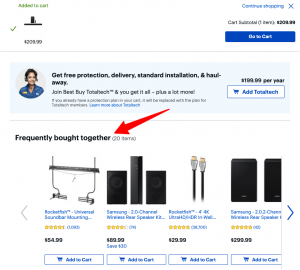
What is the first thing that comes to your mind when I say the words Search Engine Optimization? I bet most of us would answer keywords. So, let’s talk about them because if we just take the words of SEO experts, it seems like there is no SEO without keywords. This actually is true. Consider this as an analogy: Just as cells are the basic building blocks of humans, keywords are the block on which the entire SEO building is standing. They are to SEO, what atom is to every element. While the term keyword is self-explanatory, it has multiple iterations, one of which we will discuss in this blog – long tail keywords.
Why are keywords important in searches
Before we talk about keywords and their various types, let’s first understand why keywords are so important in searches and why they matter.
Backlinko founder Brian Dean once said: “Keywords are like a compass for your SEO campaigns: They tell you where to go and whether or not you’re making progress.”
Basically, keywords are the threads holding your SEO strategies together. They’re more than just search terms; they’re the link between what users are searching for and the content or services that websites offer.
Keywords are of different types, and each has its own utility, function, and relevance in SEO. People often see it as long tail keywords vs short tail keywords, like it is a competition or an either or situation. But it is not. Both have different purposes and can add value to your SEO strategy.
Short Tail Keywords
They are also known as head keywords or head terms in SEO. These are brief and generic terms usually consisting of one or two words. They cover a wide search intent, meaning that users may be looking for general information. For example, if a person wants information on a pet dog and he just enters “chihuahua”, it is a short-tail keyword. These are high search volume keywords and usually have high competition.
Medium tail keywords
As their name suggests, they lie between short and long tail keywords. Medium tail keywords are also called ‘chunky keywords’. They are somewhat competitive and usually made up of two to three words. They are more common for shopping and local searches like “buy facemask online” or “best London restaurants”.
Long Tail keywords
These are longer, more specific phrases that typically consist of three or more words. For example, if the same person who entered the short tail query looking for a pet dog enters “best dog breed to pet”, it means their search intent is clear: they are looking for a pet dog.
They have a lower search volume because they are not generalized search terms thus, they also offer lower competition.
Branded keywords
Branded keywords, as the term suggests, include the name of a specific brand or company. For example, “Nike shoes,” “Apple iPhone,” “Amazon Prime.” These are used by people who are already familiar with the brand or are returning customers. These keywords have high conversion rates and varying levels of competition depending on the brand’s popularity.
Transactional keywords
Transactional keywords specify that the user is ready to make a purchase or take a specific action. For example, “Buy Nike Air Max shoes,” “Sign up for Netflix,” and “Download Adobe Photoshop.” These keywords clearly indicate user intent to make a transaction and often have a high commercial value for businesses. But, they can be highly competitive in certain industries.
Informational keywords
Informational keywords are used when users seek information, answers, or solutions to their queries. For example, “How to wire a circuit” or “History of the Roman Empire.” These indicate educational intent and have little commercial value compared to transactional keywords. However, they can be valuable for building brand authority and attracting organic traffic by offering solutions to users’ queries.
The idea of long tail keywords
Long tail keywords are all the rage in SEO because they are the king – the actual money-minting machine. They are the Money Heist of SEO. Why? Because the majority of organic traffic comes from long-tail keywords. These targeted, specific phrases drive qualified leads far more effectively than generic terms.
Over 50% of search queries consist of four or more words. Optimizing for long-tail helps you tap into this high-converting audience.
Using a long tail keyword means you’re providing users with the specific answers they are looking for. Basically, you are tapping into the search intents of users. For example, instead of targeting the broad keyword “digital marketing,” a business might use the long tail keyword “best digital marketing strategies for small businesses,” which directly addresses the needs of a specific audience segment.
In the ever-evolving landscape of SEO, where competition fiercely burns and algorithms constantly shift, long-tail keywords emerge as beacons of opportunity. Why? Because they never miss their target.
Competition for high-volume head keywords is fierce, often dominated by established brands. Long-tail keywords, however, present a more level playing field. With lower search volume but higher conversion rates, they offer an opportunity to rank higher and capture audience attention without battling industry giants. For instance, a shoe store creating content around various long-tail queries related to foot types, training styles, and shoe features positions itself as a trusted advisor, fostering user loyalty and increasing organic traffic.
By strategically incorporating long-tail keywords into your content, you demonstrate expertise and build topical authority. Think of it as establishing yourself as a go-to resource in your niche.
Trust is the biggest currency in all businesses, and more so in the online business because you are not interacting face to face. You might not even be on the same planet, so it is better to opt for a brand you have had a good experience with and trust.
That’s where the true power of long-tail keywords lies- not just in search engine rankings but in understanding your audience.
Each long-tail phrase represents a unique user need, desire, or question. By addressing these in your content, you build trust, engage in relevant conversations, and ultimately foster meaningful connections with your potential customers.
How to find long tail keywords using Google keyword tool
Google’s keyword tool, ‘Google Keyword Planner’ is a goldmine of keyword ideas since most – if not all – online searches are taking place here. It is a free tool that offers keyword ideas and traffic estimates to enable you to build a Search Network campaign.
To find long tail keywords Adwords (now Google Ads) sign-in is required. Then, navigate to the Keyword Planner, and enter a seed keyword (broad topic) or website URL related to your niche. The tool will provide keyword suggestions along with their average monthly search volumes. You can look for longer, more specific phrases among the suggestions.
Users can apply location and language filters for targeted results and can combine Google Keyword Planner with other tools like Google Trends, AnswerThePublic, or paid ones like SEMrush, MozPro, and Ahrefs long tail keywords tool for deeper insights and broader keyword discovery.
Beyond the basics
If you really want to scrap the barrel to find the most relevant keywords, you must apply some smart strategies to get your answers. Brace yourself because these tips are so straightforward that you might find yourself surprised for not using them sooner. Let’s dive in!
Google autocomplete
We all rely on autocomplete to read our minds. And it does that very well nine out of ten times. So, why not use it as a source of long-tail keyword ideas? Just start typing your seed keyword into Google’s search bar and observe the autocomplete suggestions that appear.
These recommendations are based on popular searches related to your keyword. Once you have the list, use the most relevant long tail keywords and see your SEO improve.
Quora, Reddit, and other community forums
Explore popular questions and discussions within your niche. See what users are actively asking and struggling with. Pay attention to the questions, problems, and interests expressed by community members. These can often provide useful insights into potential long-tail keywords that address specific needs and concerns within your target audience.
Amazon’s “frequently bought together” and “customers also bought” sections
They are a great source to identify related products and their associated keywords. The idea is to look for recurring keywords, product categories, or specific items that appear frequently across multiple product listings. Explore the results and product listings to uncover additional keywords, product categories, and related items that may be relevant to your business. You can benefit from keyword research tools such as MerchantWords, Helium 10, or Jungle Scout to further explore associated keywords and search volumes.

Social listening tools
Social listening tools like Brandwatch or Sprout Social can be powerful allies in your keyword research journey, offering insights into real-time conversations and user preferences. They scan social media platforms, forums, blogs, and other online communities, gathering data on brand mentions, industry topics, and user discussions. You can use them to monitor how users discuss your brand and competitors, uncovering relevant keywords and phrases naturally used in conversation.
It is also a good way to explore popular topics and hashtags within your industry, identifying emerging keywords and user pain points. You can prioritize keywords that reflect users’ needs and problems, not just high-volume generic terms.
Leveraging Twitter and TikTok trends
You must have been living under a rock if you don’t know that every popular trend now breaks out on TikTok. Even Instagram is now outdated. So go on TikTok and explore trending hashtags and sounds.
Find out what trends are getting traction and how they might relate to your business niche. If you have a TikTok Pro account, utilize its analytics to understand popular content related to your niche. Analyze trending topics and keywords within your audience demographics.
Bonus tips
While it is natural to get overwhelmed will all the long tail keyword suggestions and try to use all of them, it is important to know your goal and only choose those keywords that are certain to boost your search engine visibility.
Here are some tips to smartly filter your keywords:
Identify seasonality and trends: Use Google Trends to identify seasonal fluctuations in search volume for long-tail keywords and capitalize on trending topics.
Compare similar keywords: Analyze the relative popularity of different long-tail variations within Google Trends.
Filter by region and timeframe: Refine your search based on your target audience and campaign timeframe.
Combine platforms: Don’t limit yourself to one platform. Combine insights from multiple social media platforms and tools to get a well-rounded understanding of current trends and user interests.
Over to You
Filtering long tail keywords effectively is crucial for improving SEO as it helps to focus on the most relevant and valuable keywords for your website. While looking for these keywords, consider their relevance to your Business, their search volume, competitiveness, and, most importantly, their long-term value. This will help you filter keywords that have the highest potential to improve your SEO performance and drive valuable organic traffic to your website.

